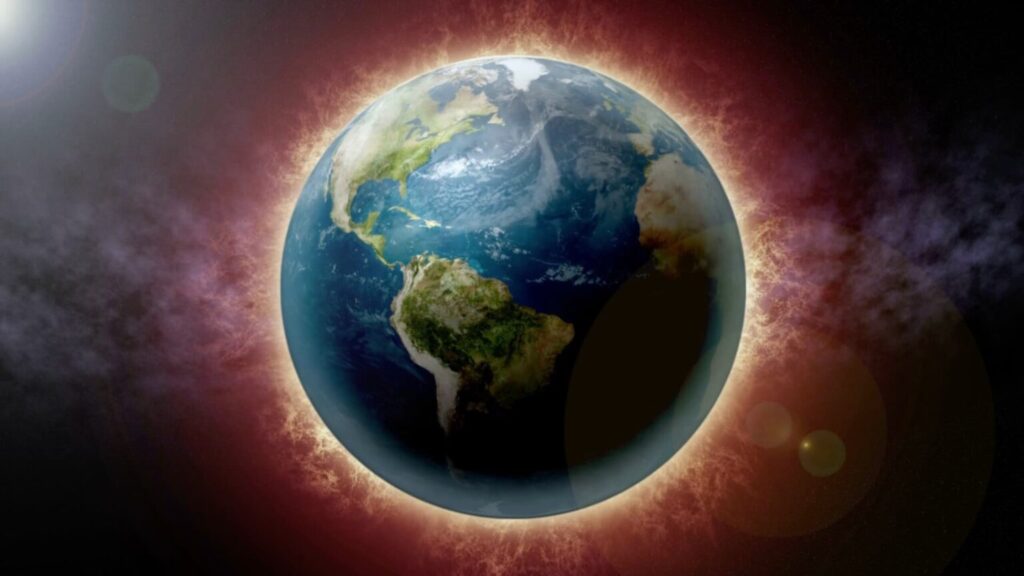District-level projections from 2021-2050 indicate a warmer and wetter future, marked by extreme events.
Rasheed Kappan
The Intergovernmental Panel on Climate Change (IPCC) synthesis report is due for release this month. The report will collate the contents of the three Working Group (WG) reports released during 2021–2022 on science.
The WG reports have already highlighted that “climate change is impacting all parts of the world, and more severe impacts can be expected in the future if greenhouse gas emissions are not cut down by half in this decade.” Adaptation actions are the need of the hour, says Dr Indu K Murthy, Principal Research Scientist heading Climate, Environment and Sustainability at the Centre for Study of Science, Technology and Policy (C-STEP).
Warmer, Wetter Future
Assessing climatic changes in 723 districts spread across 27 States of India, a C-STEP study key authored by Dr Indu has shown an alarming trend. The summer maximum and winter minimum temperatures rose significantly from 1990 to 2019. District-level projections from 2021-2050 indicate a warmer and wetter future, marked by extreme events.
Heavy rainfall events have been particularly nasty in their on-ground impact. During the 1990-2019, kharif season (June to September) recorded rainfall saw a significant 15% increase in the Western Ghats and the Northeastern states.
The projections for 2021-2050 are even more disturbing. Kharif season rainfall will rise 15-25% in 17% of India’s districts under the RCP 4.5 (Representative Concentration Pathway) scenario. RCP 4.5 is defined by the Intergovernmental Panel on Climate Change (IPCC) as a moderate scenario where carbon emissions will peak around 2040 and then decline.
Under the RCP 8.5 scenario – the highest baseline emissions scenario where emissions continue to rise throughout the 21st century – 50% of the districts will see a dramatic rise in seasonal rainfall.
Rainfall pattern changes and rising high-intensity rainfall, the C-STEP study says, will affect surface and groundwater availability with implications for water quality, availability and management for drinking and irrigation. Crop destruction will affect farm incomes and livelihoods, while floods will weaken/destroy infrastructure linked to communication, power networks, bridges, roads, and railways.
Rising temperature affects agricultural crop growth, productivity, and human and livestock health. The human costs are also enormous. “Extreme hot weather and heat waves lead to exhaustion and heat strokes and worsen the chronic health conditions in humans. The indirect impact on health is an increase in disease-causing vector-borne insects and rodents,” says Dr Indu.
Under the RCP 4.5 scenario, a maximum warming of 2℃ to 2.5℃ is projected for the Manipur districts of Bishnupur, Churachandpur, Chandel, and Noney. Districts in Uttarakhand, Uttar Pradesh, Arunachal Pradesh, Assam, Gujarat, Madhya Pradesh, Tamil Nadu, Karnataka and Telangana will see summer temperatures rise by 1.5°C to 2°C.
“The direction of change in temperature and rainfall (warmer and wetter futures) is aligned with studies done at different scales for India and the world, indicating the need to find ways to internalise climate information into the planning process, strengthening the early warning systems in India and implementing programmes and policies that are aimed at adaptation to the worst-case scenario,” says Dr Indu.
Tracking India’s Climate Action
The Climate Action Tracker (CAT) is an independent scientific project that tracks government climate action, measuring it against the Paris Agreement’s aim to hold global warming well below 2°C and pursue efforts to limit warming to 1.5°C.
CAT has rated India’s climate action as ‘highly insufficient’ and its Long-term Strategy for Low Carbon Development (LTS), a breakdown of initiatives by sector, as ‘insufficient’. Evaluating India’s LTS as ‘Poor,” CAT notes: “These do not go beyond current policies and general future direction. Based on its LTS, India plans to continue to develop coal in the long term. Overall, the level of information provided is extremely limited with no emissions pathway to demonstrate how India will reach net zero by 2070.”
On renewable energy (RE), CAT states that India missed its 2022 target of 175 GW. But it acknowledges the country’s continuing expansion of its RE capacity, one of the fastest in the world.
“India has a 500 Giga Watt (GW) target for 2030, multiplying current capacity by four. The Draft National Electricity Plan 2022 highlights that India is planning to add significant solar and wind capacity by 2031-32, an increase of 6 and 3 times from 2021-22 level, respectively,” the tracker adds.
Agro-Pastoral Economies Destroyed
Leo Saldanha from the Bengaluru-based Environment Support Group (ESG) offers a reality check on India’s 500GW target: “Almost all of that is happening by destroying agro-pastoral economies, which have the highest capacities to secure sequester carbon because of the nature of the land itself.”
Most of the utility-scale solar parks, he points out, “are coming up in grassland ecosystems which are better than rainforests in sequestering carbon. Most of that land is gone forever.”
Former Indian Meteorological Department (IMD) Director General K J Ramesh says, “The stringent assessment of India and the other emerging economies should be seen in the context of the developed economies, the past-emitters of greenhouse gases, failing to meet their Copenhagen commitment – to give most impacted countries a grant of 100 billion dollars a year. Where is that green climate fund corpus?”
Risk Reduction, Management
The only way out would be early warning and early detection, Ramesh points out. “But early action has to happen at the local level. No one has the machinery for that. Inevitably, the focus has now shifted to risk reduction and risk management.”
India, he says, will have its own roadmap to reduce coal dependency on energy needs by increasing its share of renewable energy. But the big challenge is controlling methane and nitrous oxide emissions, secondary generation of nitrous oxide, methane, and ammonia from air pollution, solid waste management and sewage treatment.
Infrastructure bottlenecks are aplenty. “Solid waste dumps are there in every town and city. Our waste management capacity is much less than the generation potential. Investments in the National Clean Air Plan (NCAP) for 100 cities, including all smart cities, are not helping during heavy rainfall events,” he adds.
“Transport sector, being the biggest emitter, will have to see a drastic reduction in fossil fuel consumption. Penetration of two-wheeled and three-wheeled electric vehicles is growing. Although the scrapping policy for vehicles older than 15 years will help, how many families can afford to replace their old vehicles?” he wonders.
Challenges will remain unless safeguards are in place from extreme climatic impacts. Cyclone Fani was a ghastly reminder. Restoring the destroyed housing and power supply network cost over Rs 40,000 crore to Odisha and the national exchequer. Such extreme events impacting shorelines, affecting millions of lives and high-cost infrastructure will only worsen in the future.
Metro Systems as Polluters
Billed as green projects to beat air pollution in the same league as electric vehicles, metro systems have mushroomed in cities across India. But Leo Saldanha disagrees. “Metro does pollute, and very heavily.”
He elaborates: “The infrastructure required to run it, the concrete embedded per person, per kilometre consumption is enormous. It is stupid to say that we can plant 10,000 trees and continue to build all those metro stations. The very idea of the metro is a highly energy-dependent and extractive travel form.”
Bengaluru has only about 6,300 buses. “Why can’t we double it to 12,000? They are not energy dependent like the metro. The cost of buying those buses is trivial compared to the Metro. The metro cost nationwide is about Rs 2,50,000 crore now.”
The Bengaluru Metro cost, he says, has skyrocketed from the proposed Rs 5,000 crore to Rs 17,000 crore on completion. “They deliberately undervalue the cost so that the project gets through. They over-value its benefits. There is no possibility of an audit because there is a regulatory collapse.”
Rasheed Kappan is a Bengaluru-based senior journalist. The story first appeared on www.theprobe.in.


